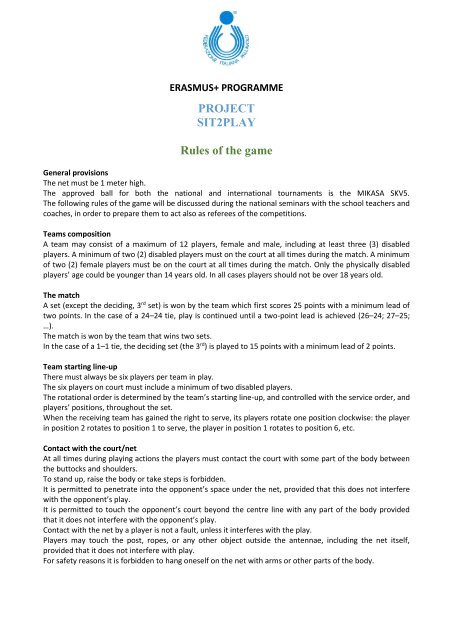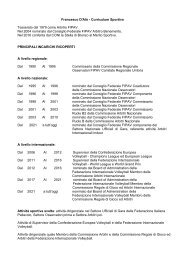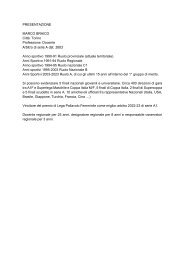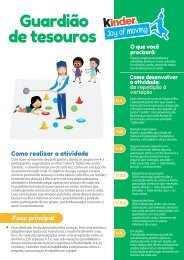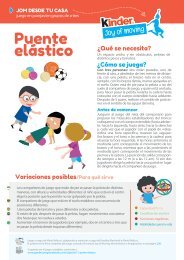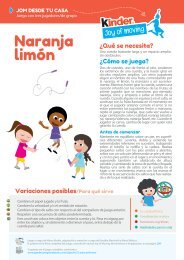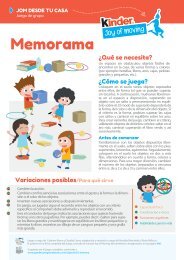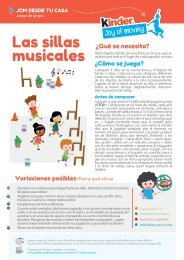Sit2Play Rules
Create successful ePaper yourself
Turn your PDF publications into a flip-book with our unique Google optimized e-Paper software.
ERASMUS+ PROGRAMME<br />
PROJECT<br />
SIT2PLAY<br />
<strong>Rules</strong> of the game<br />
General provisions<br />
The net must be 1 meter high.<br />
The approved ball for both the national and international tournaments is the MIKASA SKV5.<br />
The following rules of the game will be discussed during the national seminars with the school teachers and<br />
coaches, in order to prepare them to act also as referees of the competitions.<br />
Teams composition<br />
A team may consist of a maximum of 12 players, female and male, including at least three (3) disabled<br />
players. A minimum of two (2) disabled players must on the court at all times during the match. A minimum<br />
of two (2) female players must be on the court at all times during the match. Only the physically disabled<br />
players’ age could be younger than 14 years old. In all cases players should not be over 18 years old.<br />
The match<br />
A set (except the deciding, 3 rd set) is won by the team which first scores 25 points with a minimum lead of<br />
two points. In the case of a 24–24 tie, play is continued until a two-point lead is achieved (26–24; 27–25;<br />
…).<br />
The match is won by the team that wins two sets.<br />
In the case of a 1–1 tie, the deciding set (the 3 rd ) is played to 15 points with a minimum lead of 2 points.<br />
Team starting line-up<br />
There must always be six players per team in play.<br />
The six players on court must include a minimum of two disabled players.<br />
The rotational order is determined by the team’s starting line-up, and controlled with the service order, and<br />
players’ positions, throughout the set.<br />
When the receiving team has gained the right to serve, its players rotate one position clockwise: the player<br />
in position 2 rotates to position 1 to serve, the player in position 1 rotates to position 6, etc.<br />
Contact with the court/net<br />
At all times during playing actions the players must contact the court with some part of the body between<br />
the buttocks and shoulders.<br />
To stand up, raise the body or take steps is forbidden.<br />
It is permitted to penetrate into the opponent’s space under the net, provided that this does not interfere<br />
with the opponent’s play.<br />
It is permitted to touch the opponent’s court beyond the centre line with any part of the body provided<br />
that it does not interfere with the opponent’s play.<br />
Contact with the net by a player is not a fault, unless it interferes with the play.<br />
Players may touch the post, ropes, or any other object outside the antennae, including the net itself,<br />
provided that it does not interfere with play.<br />
For safety reasons it is forbidden to hang oneself on the net with arms or other parts of the body.
Service<br />
The ball can either be hit with one hand or any part of the arm after being tossed or released from the<br />
hand(s), or thrown with two hands in the opponents’ court.<br />
Only one toss or release of the ball is allowed.<br />
At the moment of the service hit, the server’s buttocks must not touch the court (the end line included) or<br />
the floor outside the service zone. The server’s foot(feet), leg(s) or hand(s) may touch the court and/or the<br />
free zone outside the service zone.<br />
After the hit, he/she may move outside the service zone, or inside the court.<br />
To block an opponent’s service is permitted.<br />
Time-outs<br />
Time-out requests must be made by showing the corresponding hand signal, when the ball is out of play<br />
and before the whistle for service.<br />
All time-outs that are requested last for 30 seconds.<br />
Substitution<br />
There’s no limitation to the number of times a player may enter the game during a set for a substitution.<br />
A player of the starting line-up may leave the game and re-enter and only to his/her previous position in<br />
the<br />
line-up.<br />
A substitute player may enter the game in place of a player of the starting line-up and he/she can only be<br />
substituted by the same starting player.<br />
Change of courts<br />
After each set, the teams change courts, with the exception of the deciding set.<br />
In the deciding set, once a team reaches 8 points, the teams change courts without delay and the player<br />
positions remain the same.<br />
Disabilities<br />
All physical or mental disabilities, attested by the attending physician, are admitted.<br />
ISV Inclusive Sitting Volleyball rules<br />
The official regulation of sitting volleyball has been reduced and simplified in order to make it more<br />
appealing to the young players of <strong>Sit2Play</strong> and to allow a better integration on the court among ablebodied<br />
and disabled players: less direction and more action.<br />
Here are a few changes that strictly relate to the goal of integration:<br />
1. The service can be executed in a simplified version, being a very technical skill that can’t be easily<br />
learned by everybody. In sit2Play the service can be effectively completed by throwing the ball with<br />
two hands on the other side of the court.<br />
2. There’re no limitations for the substitution of players. Standing the requirement of two disabled<br />
players on the court at all times, a player can enter the game for as many times the coach deems<br />
fit.<br />
Game formula for the national tournament
Each Partner may at its discretion devise a formula for the national tournament, at the end of which there<br />
will be a winning school that will take part in the international tournament.<br />
The only issues to be respected are the following:<br />
1. at least 3 teams, composed of students from different schools on the national territory, must<br />
participate in the tournament;<br />
2. A team can consist of a maximum of 12 male and female athletes, of which at least 3 disabled. A<br />
minimum of two athletes classified as disabled must always be present on the court. In any case<br />
there must always be at least 2 female athletes on the court;<br />
3. Participating teams to the national tournament can also be composed by players from two or more<br />
schools from the same geographical area.<br />
4. The national tournament must end by September 2019.<br />
Game formula of the Final International Tournament<br />
The Final Event will take place in Rome in the following dates:<br />
19 th November 2019<br />
1. h. 10:00, simultaneously, Match 1 Pool A / Match 1 Pool B<br />
2. h. 11:30, simultaneously, Match 2 Pool A / Match 2 Pool B<br />
3. h. 17.00, simultaneously, Match 3 Pool A / Match 3 Pool<br />
20 th November 2019<br />
1. h. 10.00 semi-final match between the first two classified of each pool<br />
2. h. 11:30, simultaneously, 5°-6° place / finale 3°-4° place Finals<br />
3. h. 16:00 1°-2° place FINAL<br />
4. h. 17:30 awarding ceremony


